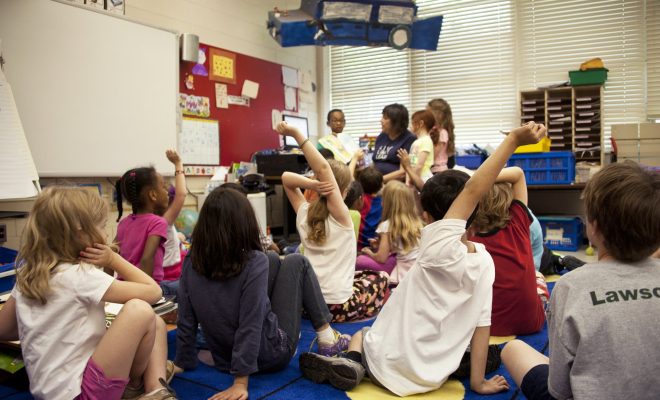6 Ways That Edtech Can Help Students with Autism

Some people would be astounded that statistics indicate one out of every 68 students is on the autism spectrum. Therefore, traditional ways of educating these students might not be beneficial. Technology may very well be the only answer to helping students with autism, and there are many reasons and benefits as to why this situation should exist in every school district.
- Visual Appeal
The main benefit to using technology for helping students with autism is how colorful and visually appealing it can be. According to Kristie Brown Lofland from the Indiana Resource Center for Autism, “Technology just makes visual images more accessible to an individual with [autism]. Computer graphics capture and maintain their attention.”
- Using Assistive Technologies
Assistive technologies have to be put in place to aid students with autism. One source of various assistive technologies can be found through TechMatrix, which is sponsored by the National Center for Technology Innovation and the Center for Implementing Technology Education. This company gives information that links teachers and parents to resources for all subjects areas.
- Improve Verbal Skills with Scene Displays
About 25 percent of people who have autism are non-verbal according to Autism Speaks. Therefore, finding a way to communicate with these students is an essential part of education. Many apps appeal to these students and to help them learn needed communication skills. One type of app is called a visual scene display, which allows students to create a line of text or a story with pictures that are then translated when shared with another person. Scene Speak and Speech with Milo are great examples.
- Develop Social Skills with Technology
Research indicates that students who take part in STEM programs tend to find a path to better socialization. They become comfortable with this technology early on in their high school careers, which gives them a talking point to focus on in conversations. Therefore, they build connections with students and teachers who have similar interests. Once this process of opening up to others begins in one area of their lives, students with autism tend to start opening up in other social settings, too.
- Digital Tools for a Flipped Classroom
As stated previously, traditional education methods are not wise to use with students who have autism. This situation is mostly true because these students do not deal well with social settings. Therefore, flipping the classroom to rely on more technology must happen to make them feel more secure. Many students who fall on the spectrum adapt easily to technology, so using tablets for them in the classroom should only be natural. These technologies can be used to sustain conversations between students and teachers in a non-intimidating way. These apps go beyond the text-to-speech models like Scene Speak. One specific type of app that is wonderful for younger students with autism is iRewardChart. This app works to reinforce behaviors that these students may struggle with, especially social behaviors. It allows teachers to reward these students easily through goal setting.
- Appeal to Special Interests
Because of this interest with technology, students with autism end up choosing a STEM major in college, according to research conducted by Washington University in St. Louis. Therefore, high schools should adapt STEM programs so they appeal to students with autism, too. One such school, STEM3 Academy in Los Angeles, created programs that include game design, 3D design and printing, electronics and programming, robotics, coding, and cyber security programs that strictly appeal to students who fall on the autism spectrum, thus making them ready for similar majors in college.
Conclusion
This compilation of technologies helps students with autism, but it barely scratches the surface as far as the options available. Many parents and teachers need to be reassured that options are nearly limitless for technologies and programs that can help in the classroom to prepare these students for their futures.






